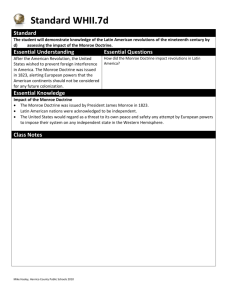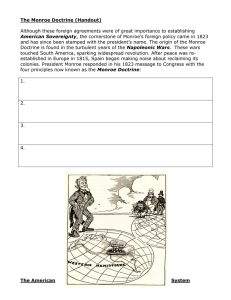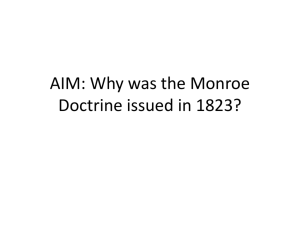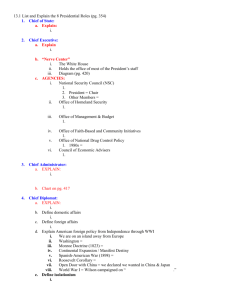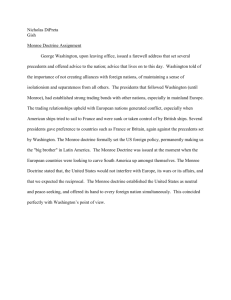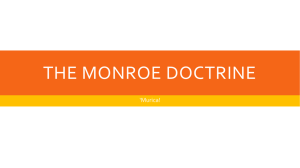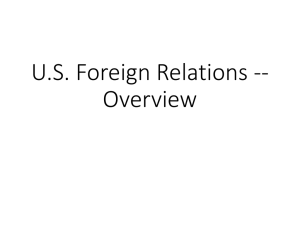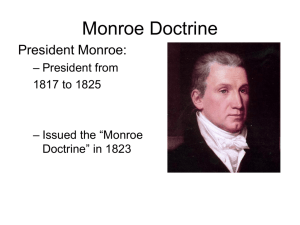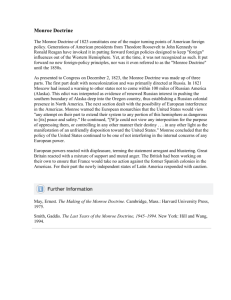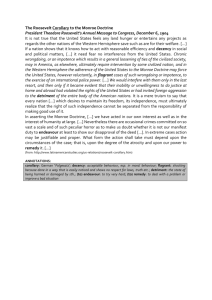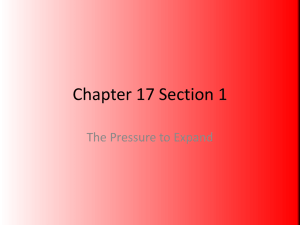Bellringer:
advertisement
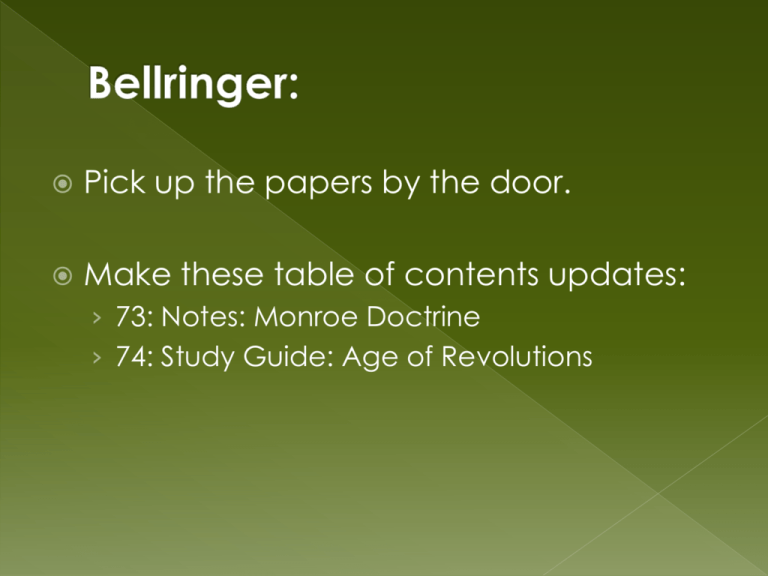
Pick up the papers by the door. Make these table of contents updates: › 73: Notes: Monroe Doctrine › 74: Study Guide: Age of Revolutions STUDY FOR YOUR AGE OF REVOLUTIONS MINI-TEST! COMPLETE THE STUDY GUIDE. After the American Revolution, the United States wished to prevent foreign (European) interference in America. The Monroe Doctrine was issued to alert European powers that the American continents should not be considered for any future colonization. › This is still a cornerstone to American foreign policy. • The Monroe Doctrine was issued by President James Monroe in 1823. • Latin American nations were acknowledged to be independent. • The United States would regard as a threat to its own peace and safety any attempt by European powers to impose their system on any independent state in the Western Hemisphere. Inherent in the Monroe Doctrine are the themes of American Exceptionalism and Manifest Destiny These 2 ideas refer to the supposed right of United States to exert its influence over the rest of the world. › Critical component of the American identity › Critical component to understanding American actions throughout history America becomes the “colossus of the North” • US dominated affairs in the Americas: • 1823 – Monroe Doctrine. • US takes Texas and Mexican Cession. • US gains independence for Cuba. • Roosevelt Corollary – US will police the America. • US sent troops to Cuba, Haiti, Mexico, Honduras, Nicaragua. • US built Panama Canal – “Yankee imperialism.” The Panama Canal “Big Stick” Foreign Policy Will introduce Latin American colonialism by the U.S. U.S. colonialism spreads to the Philippines and Eastern Asia (think China, Japan) The Caribbean becomes an “American lake” The U.S. will establish protectorates throughout the Caribbean under the guise of protecting the Caribbean from European influence. They will intervene often even in areas they do not have official control over in the Caribbean.
